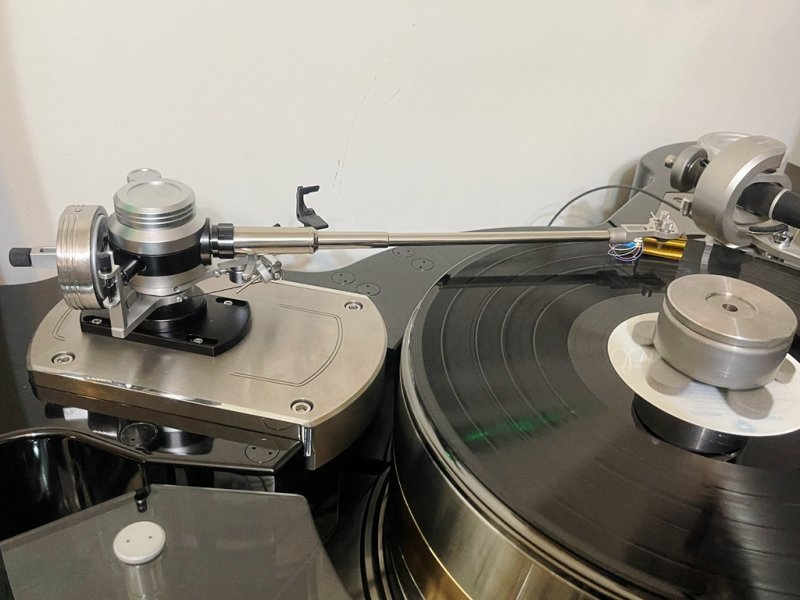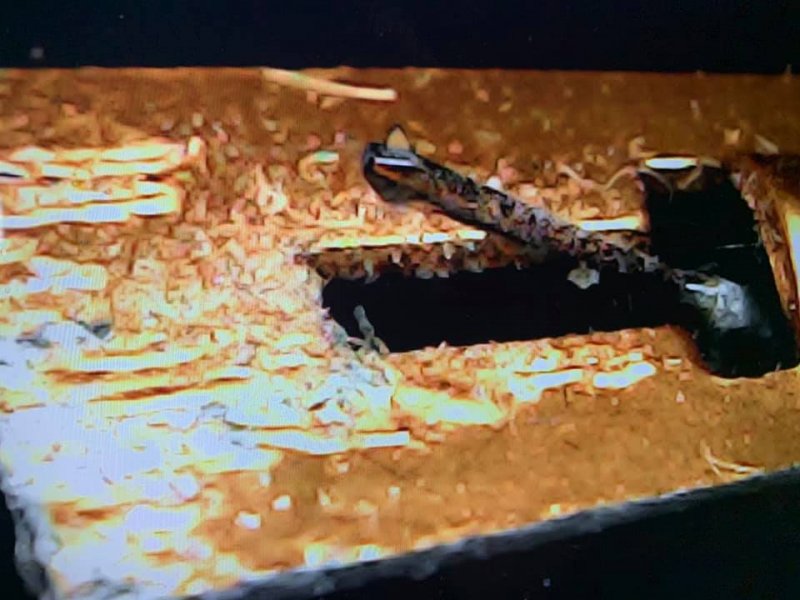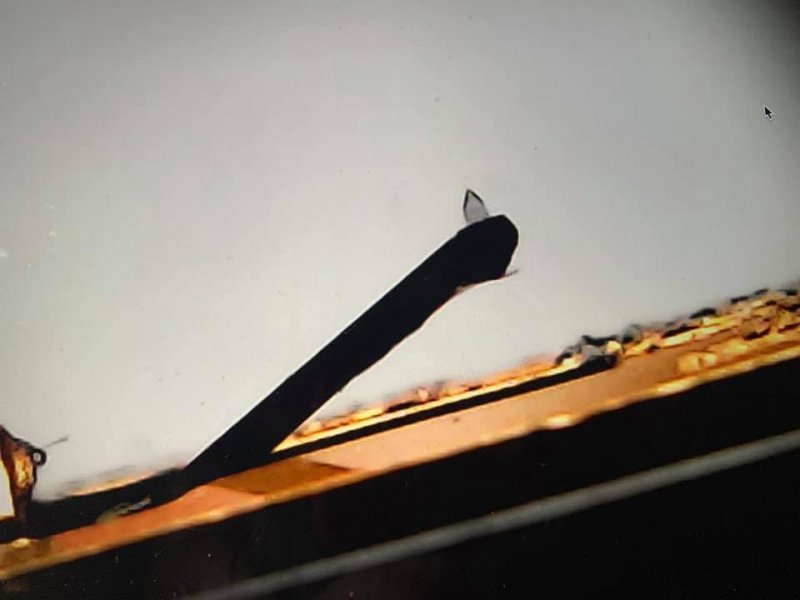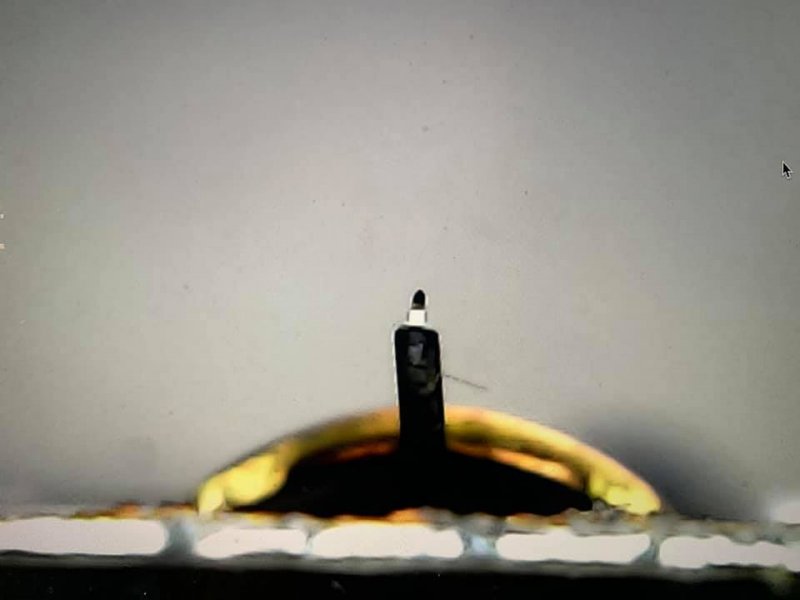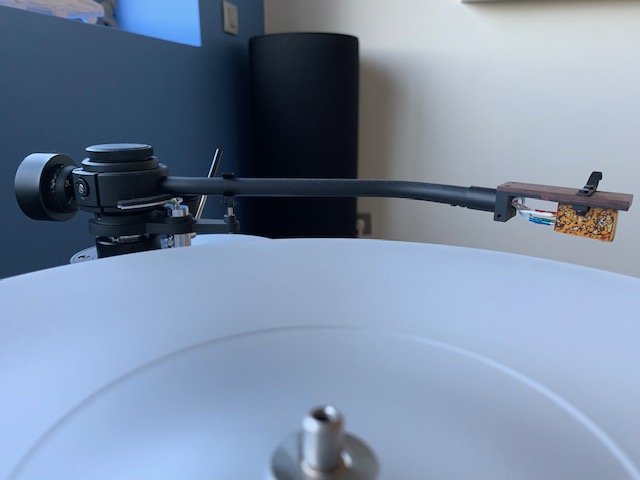Koetsu
- Thread starter jadis
- Start date
You are using an out of date browser. It may not display this or other websites correctly.
You should upgrade or use an alternative browser.
You should upgrade or use an alternative browser.
Thanks for the gorgeous Azule Blue & Tiger eye pics, guys 
With Graham Elite / Tech Das and FR64S arms these Koetsu will be singing for sure!
I picked up a 1990s Nikon "micro" lens to play with and I need to try a lot better but this 1st pic shows off the grain of my Blue Lace Diamond. 600 hours on this one (used very carefully over 2 years), sounds as good as ever, and I work hard to keep the playback bits very clean.
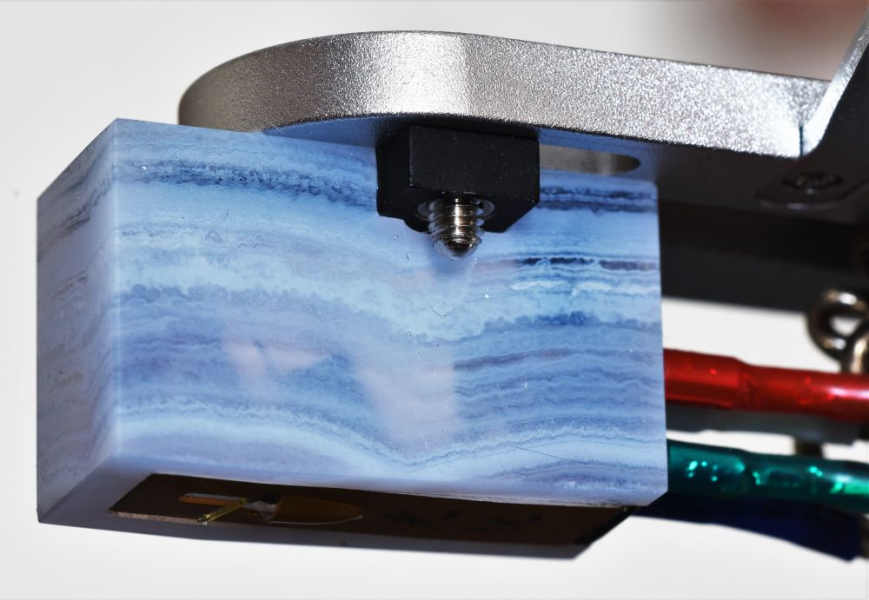
With Graham Elite / Tech Das and FR64S arms these Koetsu will be singing for sure!
I picked up a 1990s Nikon "micro" lens to play with and I need to try a lot better but this 1st pic shows off the grain of my Blue Lace Diamond. 600 hours on this one (used very carefully over 2 years), sounds as good as ever, and I work hard to keep the playback bits very clean.

As a long time Koetsu devotee I have read this thread with interest. Below I am including some text found long ago on an unidentified webpage and by an unidentified author during a sleepless night session. Despite its mysterious origin it makes more sense out of the Koetsu production history and details than anything else I have ever come across. I stumbled upon a MKI Urushi many years ago and was surprised to find that it remained my favourite despite the Longbody, Onyx, Jade and Coralstone purchases which came after. I quite trying to better it and was lucky enough to find a second a few serial numbers away. This text finally explained why: it was first Koetsu with platinum magnets and the only to use costly multilayer and heavy Urushi lacquer on an aluminium body. Most importantly it was the final cartridge to be built by Sugano senior. Of all the tonearms tried (FR-66, Kuzma 12", Sigwan, Airline etc... the little Koetsu arm takes home the cake. Despite its 9", Jeclo appearance, it is much heavier and better made and it makes more music than anything else. Abundant is the best word describe it.
As the text is too long to include in a post I am attaching as PDF. I hope it is of some interest despite its lack of atribution.
As the text is too long to include in a post I am attaching as PDF. I hope it is of some interest despite its lack of atribution.
Attachments
Thank you for the valuable information.As a long time Koetsu devotee I have read this thread with interest. Below I am including some text found long ago on an unidentified webpage and by an unidentified author during a sleepless night session. Despite its mysterious origin it makes more sense out of the Koetsu production history and details than anything else I have ever come across. I stumbled upon a MKI Urushi many years ago and was surprised to find that it remained my favourite despite the Longbody, Onyx, Jade and Coralstone purchases which came after. I quite trying to better it and was lucky enough to find a second a few serial numbers away. This text finally explained why: it was first Koetsu with platinum magnets and the only to use costly multilayer and heavy Urushi lacquer on an aluminium body. Most importantly it was the final cartridge to be built by Sugano senior. Of all the tonearms tried (FR-66, Kuzma 12", Sigwan, Airline etc... the little Koetsu arm takes home the cake. Despite its 9", Jeclo appearance, it is much heavier and better made and it makes more music than anything else. Abundant is the best word describe it.
As the text is too long to include in a post I am attaching as PDF. I hope it is of some interest despite its lack of atribution.
Both the Onyx Gold and early arm remain some of my favourite analog products. I may drift away for a while but always come back,astonished at how good they can be while still finding ways to improve both in regarding to matching components,loading etc. My latest gasp inducer was combining a 1970 Ortofon SPU ae with the Koetsu arm. I have never heard the old SPU sound better. Right now I believe the old Koetsu arm to be better than the fabled FR 64S in my system. DDK's recent description of that arm nailed the FR's character in one sentence.

My first Koetsu, which of course I still own, is a short body Onyx non-platinum (Musashino Lab silver top plate, I think 10xxx serial but I'll have to check again). I got it as all-original from the son of the original owner (the son claimed his family thought the dad "crazy" for spending $5K on a cartridge, which I had to chuckle at), but had to eventually rebuild it due to worn stylus. I requested Koetsu to retain the original magnets, and they complied. Both before and after rebuild, it has the same output level, which seems MUCH higher than the modern Onyx/Jade/Coral/etc Platinum of 0.3mV. Interestingly, this document only states 0.34 mV output for the old Onyx. I can assure you it sounds really much louder than this, perhaps 0.5 - 0.6 mV. This opens up a lot of phono stage possibilities without needing a SUT to get both tubes and low noise.As a long time Koetsu devotee I have read this thread with interest. Below I am including some text found long ago on an unidentified webpage and by an unidentified author during a sleepless night session. Despite its mysterious origin it makes more sense out of the Koetsu production history and details than anything else I have ever come across. I stumbled upon a MKI Urushi many years ago and was surprised to find that it remained my favourite despite the Longbody, Onyx, Jade and Coralstone purchases which came after. I quite trying to better it and was lucky enough to find a second a few serial numbers away. This text finally explained why: it was first Koetsu with platinum magnets and the only to use costly multilayer and heavy Urushi lacquer on an aluminium body. Most importantly it was the final cartridge to be built by Sugano senior. Of all the tonearms tried (FR-66, Kuzma 12", Sigwan, Airline etc... the little Koetsu arm takes home the cake. Despite its 9", Jeclo appearance, it is much heavier and better made and it makes more music than anything else. Abundant is the best word describe it.
As the text is too long to include in a post I am attaching as PDF. I hope it is of some interest despite its lack of atribution.
I've long assumed this old Onyx uses alnico magnets, but don't know for sure. I've also heard "Onyx Gold" and "Onyx Signature" as model names from this era - I have no idea what the distinction is, or which I have. Mine has gold-plated pins. My pre-rebuild old Onyx projected an incredibly 3D image with very good detail and a lovely euphonic "bloom" to the midrange and especially bass - certainly far from state of the art bass reproduction these days, but it was all so well balanced as to be incredibly enjoyable nonetheless - intoxicating, even. I don't know how much the worn old stylus may have impacted these attributes. I had to rebuild it once I noticed inner-most grooves starting to display a mild grunge/haze layer over the music.
The rebuilt old Onyx is more dynamic and exciting sounding than the modern Onyx Platinum, but notably doesn't yet have quite the bloom and euphony of the pre-rebuilt state. Some, but not all of the original 3D quality is there. It does sound a bit more "modern" now. Perhaps that will change with continued burn in - I have a lot of cartridges and sadly I'm still under 30 hours on this one. For now, it could be a toss up between rebuilt (alnico?) Onyx and Onyx Platinum (I also had one of these rebuilt at about the same time), but honestly at this point I'd possibly give the nod to Platinum.
I also had the opportunity to buy a pristine example of the Koetsu arm from the same son at that time, but I felt it was very clearly a Jelco build, and so passed without even trying it. I do remember thinking that the build quality & feel of my FR64fx felt superior.
Last edited:
Hello and thank you for your reply. Very interesting mention of the SPU because my first thought when trying the Koetsu arm for the first time was that it was like an SPU. By this it is meant that everything was of a whole, there were no separate parts of the music. Very nice Thorens. Here is the combination mentioned in the previous post. BTW, what is that one sentence of DDK's?Thank you for the valuable information.
Both the Onyx Gold and early arm remain some of my favourite analog products. I may drift away for a while but always come back,astonished at how good they can be while still finding ways to improve both in regarding to matching components,loading etc. My latest gasp inducer was combining a 1970 Ortofon SPU ae with the Koetsu arm. I have never heard the old SPU sound better. Right now I believe the old Koetsu arm to be better than the fabled FR 64S in my system. DDK's recent description of that arm nailed the FR's character in one sentence.

Attachments
I wonder if anyone forgets their first Koetsu? I believe the alnico magnets were in the long bodies as they require more volume than other magnets for similar strength. Run in makes a big difference with a Koetsu rebuild, more than other cartridges. They also need an LP side or two to warm up even after run in. I imagine your rebuild will bloom in time. I have had three Onyx's and the oldest of the three was the best sounding - guessing it was a MKII. Its sound was very close to the Urushi MKI which makes me wonder if yours might be platinum before they labelled them as such?My first Koetsu, which of course I still own, is a short body Onyx non-platinum. I got it as all-original from the son of the original owner (the son claimed his family thought the dad "crazy" for spending $5K on a cartridge, which I had to chuckle at), but had to eventually rebuild it due to worn stylus. I requested Koetsu to retain the original magnets, and they complied. Both before and after rebuild, it has the same output level, which seems MUCH higher than the modern Onyx/Jade/Coral/etc Platinum of 0.3mV. Interestingly, this document only states 0.34 mV output for the old Onyx. I can assure you it sounds really much louder than this, perhaps 0.5 - 0.6 mV. This opens up a lot of phono stage possibilities without needing a SUT to get both tubes and low noise.
I've long assumed this old Onyx uses alnico magnets, but don't know for sure. The pre-rebuilt old Onyx projected an incredibly 3D image with very good detail and a lovely euphonic "bloom" to the midrange and especially bass - certainly far from state of the art bass reproduction these days, but it was all so well balanced as to be incredibly enjoyable nonetheless - intoxicating, even. I don't know how much the worn old stylus may have impacted these attributes. I had to rebuild it once I noticed inner-most grooves starting to display a mild grunge/haze layer over the music.
The rebuilt old Onyx is more dynamic and exciting sounding than the modern Onyx Platinum, but notably doesn't yet have quite the bloom and euphony of the pre-rebuilt state. Some, but not all of the original 3D quality is there. It does sound a bit more "modern" now. Perhaps that will change with continued burn in - I have a lot of cartridges and sadly I'm still under 30 hours on this one. For now, it could be a toss up between rebuilt (alnico?) Onyx and Onyx Platinum, but honestly at this point I'd possibly give the nod to Platinum.
I also had the opportunity to buy a pristine example of the Koetsu arm from the same son at that time, but I felt it was very clearly a Jelco build, and so passed without even trying it. I do remember thinking that the build quality & feel of my FR64fx felt superior.
I don't believe it's using Platinum magnets because the output level is so much higher than modern Platinum Koetsus. Subjectively, at LEAST +3 dB, possibly more. Something has to account for that, and only the body & magnets were retained in the rebuild. Also the mass is very close to modern stone platinum Koetsus, so it's not just using larger magnets.I wonder if anyone forgets their first Koetsu? I believe the alnico magnets were in the long bodies as they require more volume than other magnets for similar strength. Run in makes a big difference with a Koetsu rebuild, more than other cartridges. They also need an LP side or two to warm up even after run in. I imagine your rebuild will bloom in time. I have had three Onyx's and the oldest of the three was the best sounding - guessing it was a MKII. Its sound was very close to the Urushi MKI which makes me wonder if yours might be platinum before they labelled them as such?
And yes to your first statement! I borrowed this first Koetsu for audition with no expectations, mounted it to my table, and my jaw never left the floor all weekend. It was amazing. Along with the first time hearing a Tannoy dual-concentric speaker, it is the most meaningful and important audiophile moment I've had in 20 years of this hobby.
Is this to what you refer?
Ddk in the Natural Sound thread:
“I’m not a fan of FR tonearms the bass doesn’t breathe and lacks 3012-Rs nuanced bass. What you call energy I call coloration of FR, it’s always punching even when it shouldn’t.”
Amazing how that Onyx body broke into pieces.
@jdza Can you say a bit more about the turntable here? And those intriguing big knobs...Thank you for the valuable information.
Both the Onyx Gold and early arm remain some of my favourite analog products. I may drift away for a while but always come back,astonished at how good they can be while still finding ways to improve both in regarding to matching components,loading etc. My latest gasp inducer was combining a 1970 Ortofon SPU ae with the Koetsu arm. I have never heard the old SPU sound better. Right now I believe the old Koetsu arm to be better than the fabled FR 64S in my system. DDK's recent description of that arm nailed the FR's character in one sentence.

Is this to what you refer?
Ddk in the Natural Sound thread:
“I’m not a fan of FR tonearms the bass doesn’t breathe and lacks 3012-Rs nuanced bass. What you call energy I call coloration of FR, it’s always punching even when it shouldn’t.”
The statement is incorrect as my reference to energy was not punching at all. That was his interpretation of my energy word. Energy is felt throughout the music, not just in punch
bonzo75The statement is incorrect as my reference to energy was not punching at all. That was his interpretation of my energy word. Energy is felt throughout the music, not just in punch
I am not sure why if you feel ddk misunderstood you and responded to whatever you wrote makes his statement inaccurate? I do not agree with a lot ddk believes but find it uncanny how we both end up with similar conclusions and solutions. If you look at older photos of my system you will see 2 FR64S simultaneously on the tt. However, just like a bodybuilder putting salt on his eggs (oh, no wait, that's wrong) flexing all his muscles in the act or an older Krell doing bass when there is little, the FR slams when it doesn't need to. That can be fantastic on some music of all genres but sometimes it just gets a little much. Make no mistake, I love it, especially with the fabulous JVC direct coupled (a la Neumann) cartridge, Koetsus and the wonderful FR 7 but sometimes, just sometimes, the boobs are too big, the buttocks too tight and the legs too firm and one wish for a bit more, what is the word?...............Oh Yes-"Natural" sound.
PeterA
In a way, it is a pity that your fascinating journey and delightful thread got bogged down in a pedantic debate about the word "natural". Just a bloody word! Kelly Johnson famously said of an aeroplane that if it looks right, it flies right. Seldom has a system looked more right than your current setup in your room.
wbass
The turntable is a Thorens Reference number 92 of the 100 made. The Reference has been extensively discussed here mainly in ddk's (there is that man again!) thread on 5 great turntables. They were all built during 1979 to 1980 in Lahr in Germany. Not Swiss then? No. From the late 60s to the 80s Thorens belonged to the fabled German pro audio company, EMT. They, despite many protestations on their side, built some of the best sounding turntables ever made.
Join that experience with Thorens 100 year legacy and you have the golden era of Thorens (patiently waiting to be rediscovered by pecuniated Audiophiles). At the very pinnacle was the Reference. Lots of stories abound but a commonly told one is that Thorens EMT developed it for their own research, mainly into bearing rumble and speed accuracy that a number of distributors and dealers saw it on a factory tour and demanded production. 100 was made (officially-there are stories about workers assembling a few more from spare parts but realistically how many can that be?) and allocated pro-rata per distributor depending on the size of their market.
It is an intriguing design (for the time) with much concentration on resonance control. The huge cast chassis features a number of chambers filled with metal filings, suspension sits in the gold towers (That the knobs you referred to?) and is a complex system of leaf springs and cables. The resonant frequency of this can be adjusted and is crucial to get the table sounding correct in a specific system, both in relation to the arm/cartridge being used and loudspeakers.
Drive is by an intriguing three-phase motor made by Berger in Lahr. Similar motors can be found in tape counters in the early Studer A80s. However, the Thorens has the appearance of three motors stacked on top of each other. This drives the sturdy belt through the seemingly simple but dastardly complex to get right, clutch. Electronic control for this system fills most of the underside of the table. The platter is intriguing (photo elsewhere on this site) in that it appears to be partially made from Panzerholz, thus predating the current audiophile obsession with that material by 40 years!
The very first Audio magazine I ever bought was an early 1980 Hi-Fi News. In it, a young John Atkinson reports on the London Heathrow show. There is a tiny photo of the newly released Thorens Reference. Naturally, JA pooh-poohed the excesses of the design. It was foreign and big and vulgar! What is to like? I loved it and spent 30 years hunting one down.
So what does it sound like? 'Hardly better than a Linn" says Syntax, "not very good" say others. Me? I just smile and page past the reviews of the new mega tables. Not interested, really not.
Sorry, but at Gian's the koetsu coralstone on koetsu arm sounded quite poor. I have had various koetsu now across 3012r, Graham elite, Schroeder CB, Reed 3p, Pluto, Ikeda 407, and SME V. I haven't liked a single one. Koetsu is my least liked cart and it's main issue is it lifeless. So, the only time I have heard it brought to life is with FR 64s at Shakti who had a collection of various koetsu, and 3012r next to it, and at a friend's place in London with FR 66s for the past 3 years. He has three FR carts and different SPUs too, and the FR carts are just ok.
Last edited:
Hey Bonzo. What can I say? except Gian's was the new Koetsu arm and that the arm will definitely not feature in your Blitzkrieg Approach to audio.Sorry, but at Gian's the koetsu coralstone on koetsu arm sounded quite poor. I have had various koetsu now across 3012r, Graham elite, Schroeder CB, Reed 3p, Pluto, Ikeda 407, and SME V. I haven't liked a single one. Koetsu is my least liked cart and it's main issue is it lifeless. So, the only time I have heard it brought to life is with FR 64s at Shakti who had a collection of various koetsu, and 3012r next to it, and at a friend's place in London with FR 66s for the past 3 years.
There is currently a big scandal here about enormous fraud. At the head of this was a CEO , notorious for flying in, hiring and firing and flying out. Employees gave him the nickname "Seagull" See, he would fly in, shit all over you and fly out. Naturally, the most deserving people got fired.
Are you a "seagull" Bonzo?
Similar threads
- Replies
- 57
- Views
- 25K
- Replies
- 26
- Views
- 14K
- Replies
- 75
- Views
- 29K


